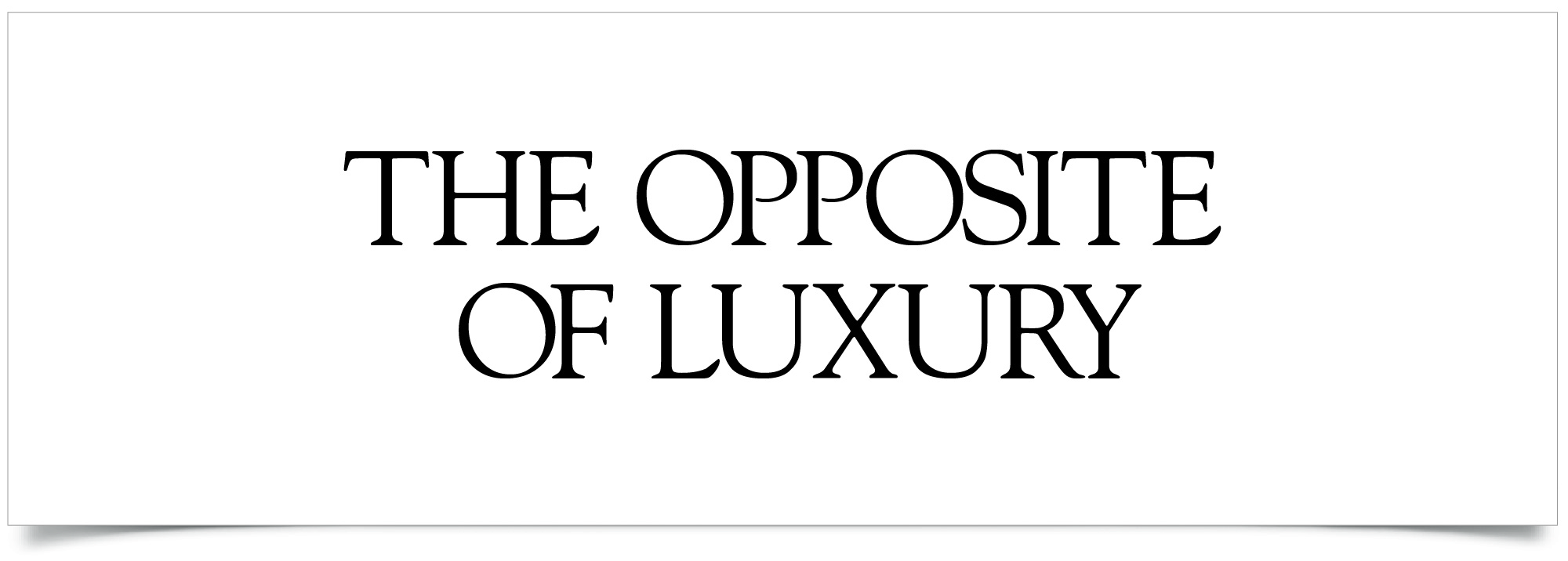In one of her epochal epigrammatic concisions, Coco Chanel summed up her philosophy of luxury branding.
“The opposite of luxury,” she said, “is vulgarity”.
After all, she seeded her statement with poison ivy, “There are people who have money; and there are people who are rich.”
What Chanel was referring to then and what luxury marketers are facing now is the turbulent and irreconcilable definition of modern luxury.
Just what is it?
Is it, quite simply, what the richest 0.2% of the world can afford? Objects whose quality trumps price? Status serving symbols? Or, as economist Thorstein Veblen pointed out, ‘conspicuous consumption’? The term used to describe lavish spending to display income or wealth, or as a means of attaining or maintaining social status.
But we already know that. What we may not know is its corollary, ‘invidious consumption’, the term for the consumption of goods and services (and ideas) for the deliberate purpose of inspiring envy in others. So are the empires of luxury built on the dark clouds of useless consumerism? Or is the pursuit of their silver lining among the most natural aspirations in the world?
Luxury means many things to many people. The American Heritage Dictionary defines it as “something inessential but conducive to pleasure and comfort; something expensive or hard to obtain.” Etymologically, it’s derived from luxus — Latin for ‘excess’. Its figurative use meant ‘dislocated’, in the sense of being out of bounds. In Middle English, it had connotations of ‘lechery’. From a branding perspective, it is the collected sum of activities addressed to inspire high-enders with unflinching loyalty and goodwill. From a consumer’s perspective, it is everything from material one-upmanship to individual catharsis.
Whatever it is, luxury today involves having to deal with wider concepts that are more nuanced and subtle. California-based, Strategic Business Insights, for instance, classifies luxury consumers into three groups. Namely, luxury as functionality, luxury as reward and luxury as indulgence; where each group, in descending order of age, size and reason, will respond accordingly to the right kind of logical, attitudinal and emotional cues respectively.
Yet, increasingly, luxury is no longer a reference to opulence. It’s a category unto itself. After all, both an expensive watch and an important work of art are luxury items. Therefore, all luxury marketers are not only competing within their product categories but for the share of wallet of luxury goods in general.
“Why do I need to know how the watch market is doing?” asked long time, former CEO of Rolex, Patrick Heiniger, “I’m in the business of luxury.”
Today, luxury is governed by a range of cultural subtexts synonymous with exclusivity – for being special rather than common; with research and experimentation – for allowing new experiences and new ideas to surface; and, with poise and class, for the qualities inherent in discretion. In other words, because luxury is in the details, outwardly displaying it means cheapening or vulgarising it.
There is a story about Heinz Berggruen, the influential German art collector, who sold a Picasso in cash to Baron Alain de Rothschild. When Berggruen offered to walk his client to his car after the deal, Rothschild declined. He had given his chauffeur the day off, he explained. So Berggruen watched the Baron casually stroll down the streets of Paris, towards the closest metro, with a Picasso under his arm – oblivious to the obligations of rank and file; open to the possibility of feeling exactly like himself.
“To me,” Berggruen is reported to have said, “that is luxury… true luxury.”
That those who have the capacity to purchase quality will also do so with taste as the benchmark that luxury marketers must cater to – offering the best of the best in successive chapters of their brand’s civilisation. In this way, they will entrust the true value and longevity of their luxury goods in the hands of discerning men and women who, quite possibly, will never forget the opposite of luxury.

